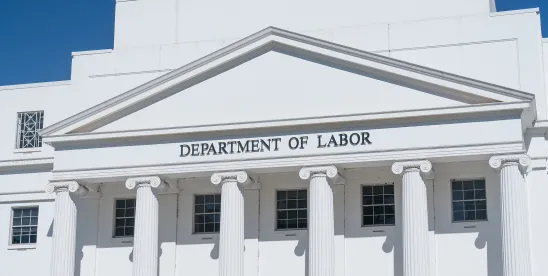On August 7, 2025, President Trump signed an executive order entitled “Democratizing Access to Alternative Assets for 401(k) Investors” (the “Executive Order”), which directs the Department of Labor (the “DOL”) and the Securities Exchange Commission (the “SEC”) to relieve regulatory burdens and litigation risk that impede investments in alternative assets (including crypto, private equity, private credit and real estate) by 401(k) and other defined contribution plan (collectively, “DC Plans”) participants. The Executive Order states that more than 90 million Americans participate in employer-sponsored DC Plans, but most of those are currently restricted from investing in alternative assets, unlike “wealthy investors” and participants in public retirement plans.
The $12.5 trillion of assets held in DC Plans has long been a target for alternative asset managers. Likewise, many DC Plan participants and sponsors have advocated for better access to such investments to enhance growth and diversification opportunities. On the other hand, detractors cite higher costs, increased complexity and lack of transparency and liquidity as reasons to restrict access to alternative assets. Although such investments are not (and have never been) per se prohibited for DC Plans under the Employee Retirement Income Security Act of 1974, as amended (“ERISA”), concerns about litigation risk (class actions alleging that it was imprudent to offer alternative investments) for plan fiduciaries, as well as securities law and other regulatory hurdles, have effectively kept such investments from becoming mainstream in DC Plan investment option lineups.
Background
On June 3, 2020, during the first Trump administration, the DOL published an Information Letter confirming that investment options under a DC Plan may include a limited allocation to private equity (the “2020 Letter”, discussed here). Notably, the 2020 Letter did not discuss direct investment in private equity funds (for example, by adding a private equity fund to the plan’s investment lineup). Rather, the 2020 Letter discussed including private equity as a small allocation (no more than 15%) within a diversified investment option such as a balanced fund or a target date fund.
Although the 2020 Letter led to some optimism for proponents of alternative assets in DC Plans, a subsequent Supplemental Statement (issued on December 21, 2021, during the Biden administration and discussed here) urged more caution. The Supplemental Statement emphasized that the DOL “did not endorse or recommend” offering designated investment alternatives with private equity components in the 2020 Letter, and that it wanted “to ensure that plan fiduciaries do not expose plan participants and beneficiaries to unwarranted risks by misreading” the 2020 Letter as saying that these investments are “generally appropriate for a typical 401(k) plan.”
Importantly, the 2020 Letter did not provide any kind of safe harbor for including alternative assets in 401(k) plan investment options, and the Supplement Statement did not prohibit such investments. The guidance simply provided that limited private equity allocations within a DC Plan investment option are permitted, but that rigorous analysis is critical when evaluating the prudence of such investments given their complexity.
The Executive Order
The Executive Order directs the DOL, within 180 days, to reexamine its guidance regarding an ERISA fiduciary’s duties in connection with making available to DC Plan participants an asset allocation fund that includes investments in alternative assets (including consideration of recission of the Supplemental Statement). For this purpose, “alternative assets” include not only private equity, private credit, real estate, and other asset classes that are not publicly traded, but also commodities and digital assets.[1]
The Executive Order also directs the DOL within such 180-day period, as it deems appropriate and consistent with applicable law, to seek to clarify its position and propose guidance on alternative assets and the appropriate fiduciary process associated with offering asset allocation funds containing investments in alternative assets. The Executive Order says the guidance may include appropriately calibrated safe harbors and directs the DOL to prioritize actions that may curb ERISA litigation that constrains fiduciaries’ ability to apply their best judgment in allowing alternative investments for DC Plan participants.
The DOL is further directed to consult with the Secretary of the Treasury, the SEC, and other Federal regulators as necessary. Similarly, the SEC is directed to consider ways to facilitate access to alternative investments, including potential revisions to existing rules relating to accredited investor and qualified purchaser status, which are currently hurdles to direct investments in alternative assets by most DC Plan participants.
Key Takeaways
- While the 2020 Letter focused only on permitting investments in diversified investment options that included a small allocation to private equity, the Executive Order picks up a much broader range of assets, including cryptocurrency and other digital assets (furthering the DOL’s recent rescission of its 2022 guidance that cautioned against investment in cryptocurrencies, discussed here) and does not suggest a cap on a fund’s allocation to alternative assets.
- The Executive Order does not by itself change any existing rules or guidance. Rather it is a directive for agencies to revisit their guidance and to issue new guidance as they determine to be appropriate to achieve the policies described in the Executive Order. It remains to be seen whether the DOL, SEC or other Federal regulators will issue new guidance and what such guidance will say. While the Executive Order strikes an encouraging tone, its ultimate impact is yet to be seen. However, those wishing to allow these offerings have reason for optimism that they could become more common if, for example, the Federal regulators institute some type of safe harbor – a possibility suggested by the Executive Order.
- We are monitoring developments and will update as warranted.
[1] For purposes of the Executive Order, the term “alternative assets” means: (i) private market investments, including direct and indirect interests in equity, debt, or other financial instruments that are not traded on public exchanges, including those where the managers of such investments, if applicable, seek to take an active role in the management of such companies; (ii) direct and indirect interests in real estate, including debt instruments secured by direct or indirect interests in real estate; (iii) holdings in actively managed investment vehicles that are investing in digital assets; (iv) direct and indirect investments in commodities; (v) direct and indirect interests in projects financing infrastructure development; and (vi) lifetime income investment strategies including longevity risk-sharing pools.






 />i
/>i
